Abstract
Some strains of Aeromonas hydrophila may be oxidase negative or only weakly oxidase positive by the Kovacs method taken from the surface of a differential medium, such as MacConkey agar. Six strains of A. hydrophila, two oxidase variable, one oxidase constant, and three weakly oxidase positive on MacConkey agar, were studied to determine the cause of oxidase variability. The bacteriostatic dyes in MacConkey agar were considered possible inhibitors of the oxidase reaction. The concentration of these dyes was varied from twice the normal concentration in zero. No change in the oxidase reaction of any of the six strains was noted. Carbohydrate utilization was also studied. When lactose was deleted from the MacConkey agar formula, the oxidase-variable and weakly oxidase-positive stains become strongly oxidase positive. When glucose was substituted for lactose in the MacConkey agar formula, all strains became oxidase negative. Substitution of nonfermentable carbohydrates, such as dulcitol or raffinose, returned all strains to the oxidase-positive state. When trehalose, which is utilized by all of the strains, was substituted for lactose, the oxidase-variable strains and two of the three weakly oxidase-positive strains became oxidase negative. The other weakly oxidase-positive strain remained weakly positive and the oxidase-constant strain remained strongly oxidase positive when trehalose was substituted for lactose. Oxidase reactions were found to be negative when the pH of the medium was 5.1 or lower. Negative oxidase reactions could be reversed by raising the pH above 5.2, and positive oxidase reactions could be reversed by lowering the pH to 5.1. Therefore, the fermentation of lactose in MacConkey agar results in the inhibition of the oxidase reaction. The acid end products of the fermentation of lactose include acetic, formic, lactic, oxaloacetic, pyruvic, and succinic acids.
Full text
PDF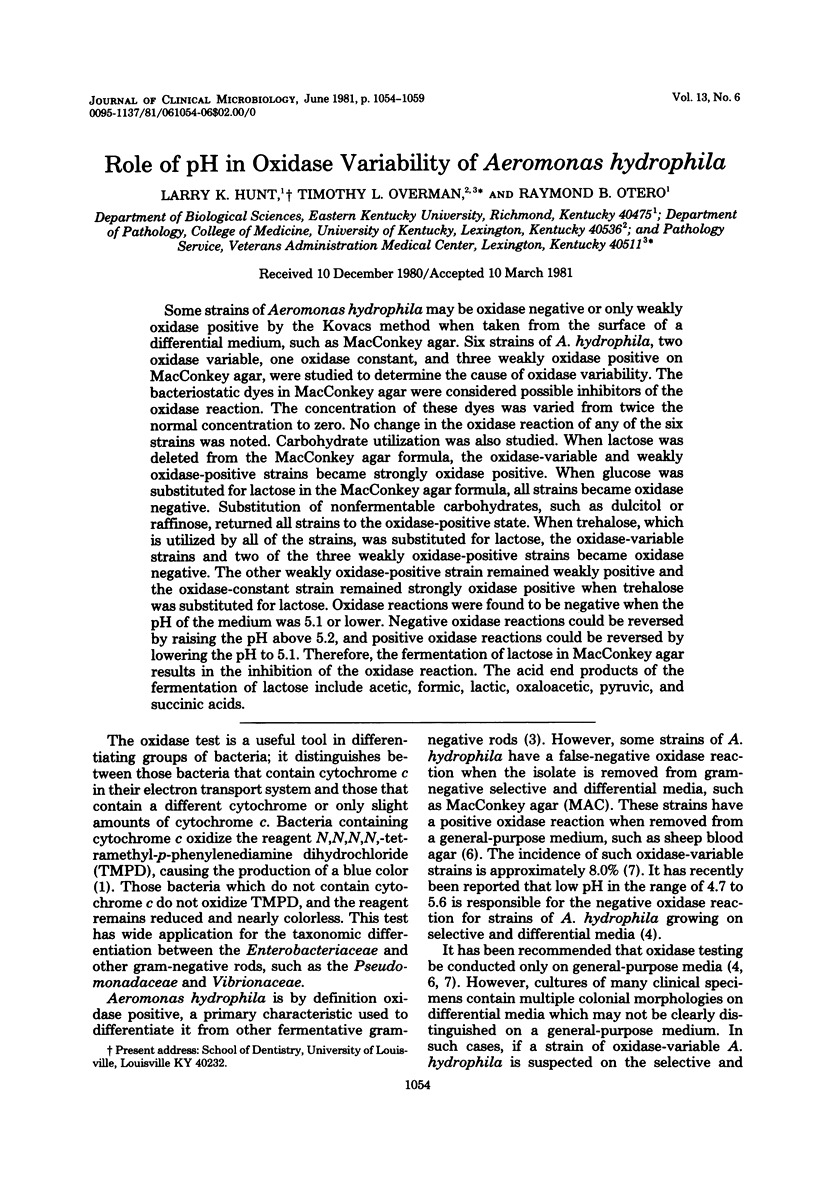
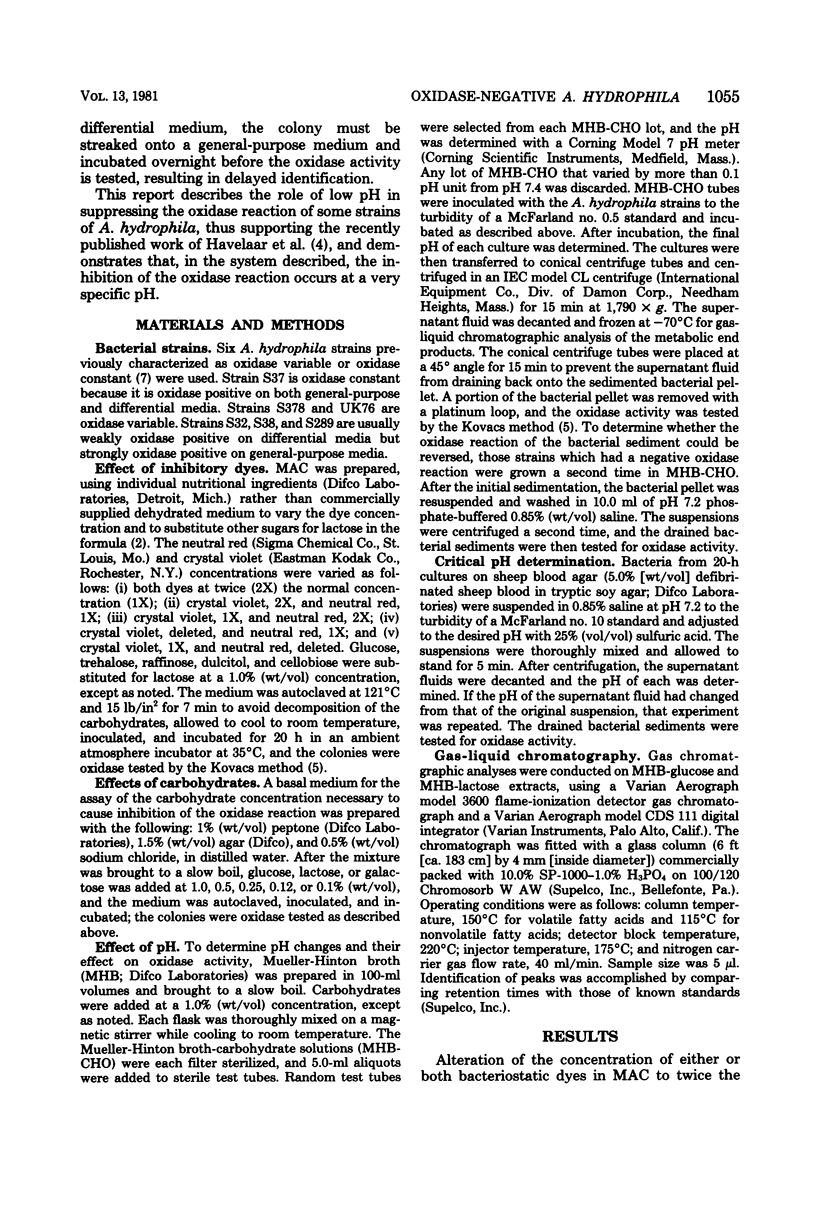
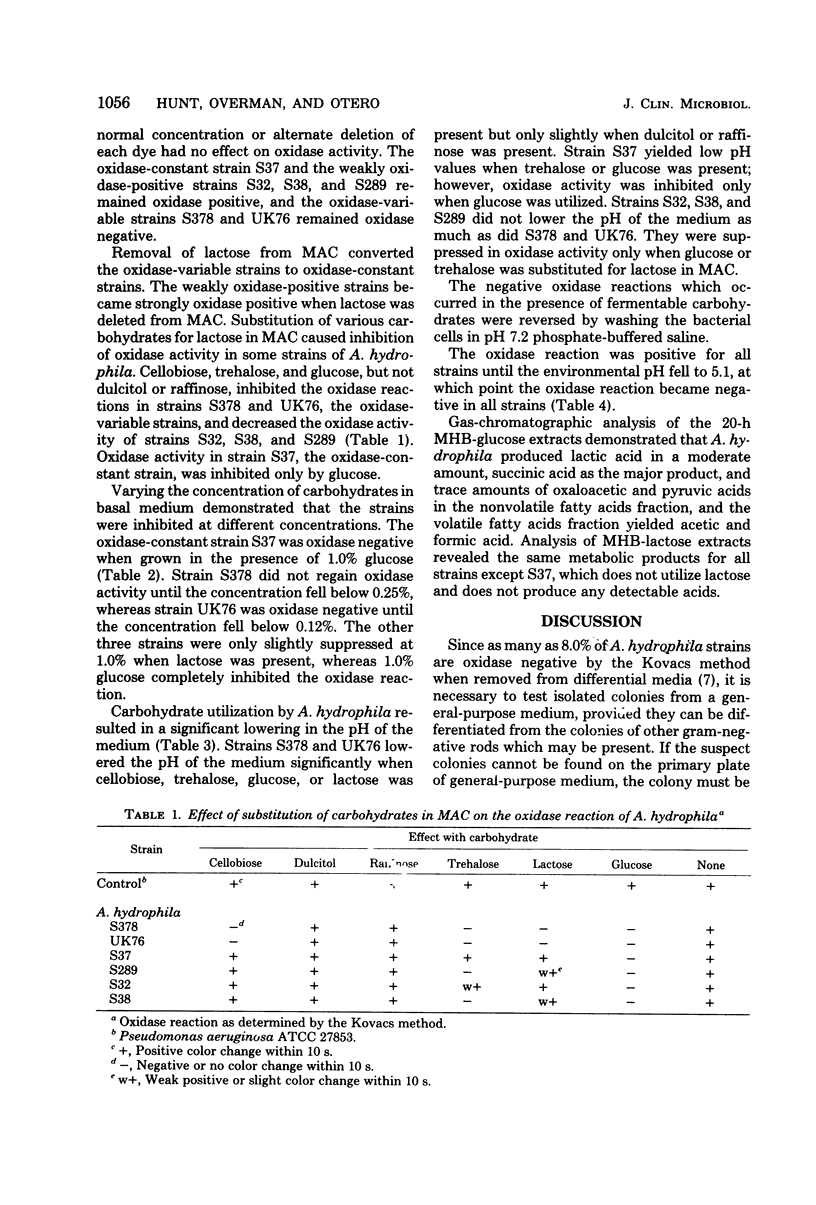
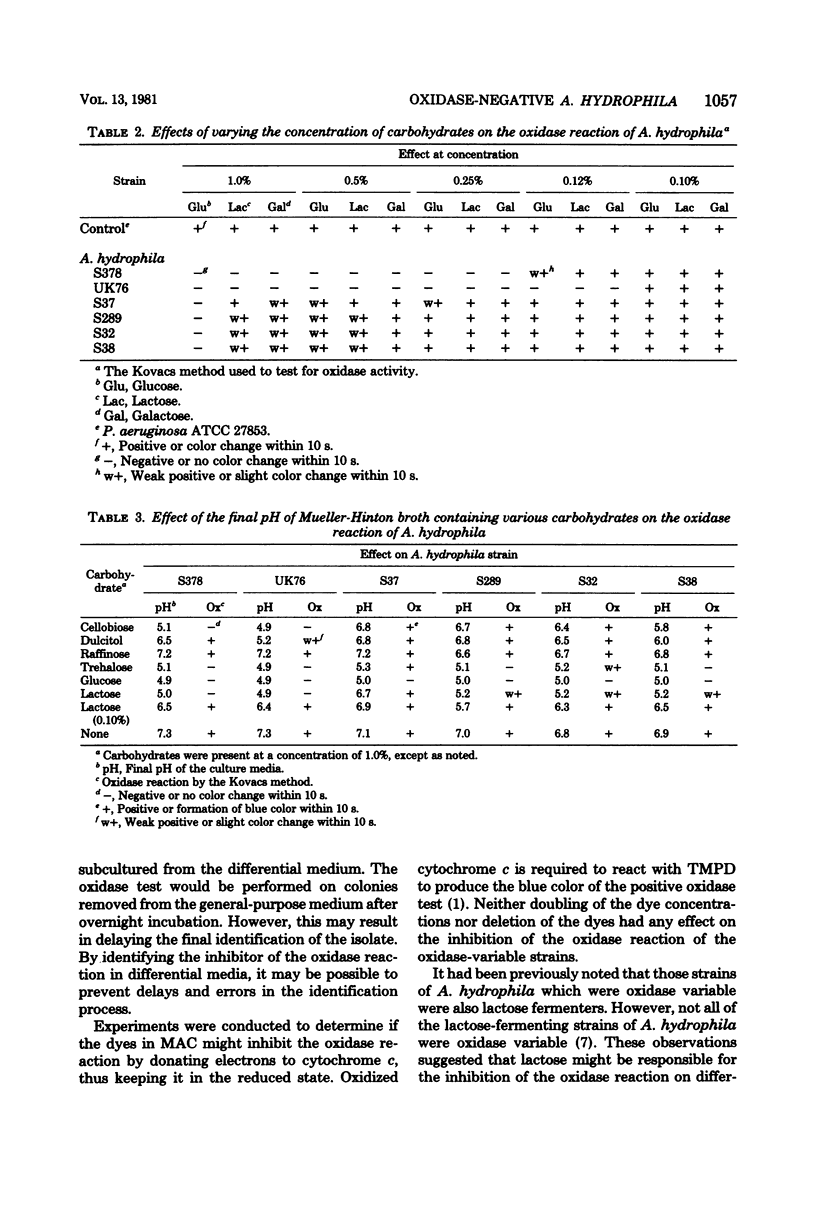
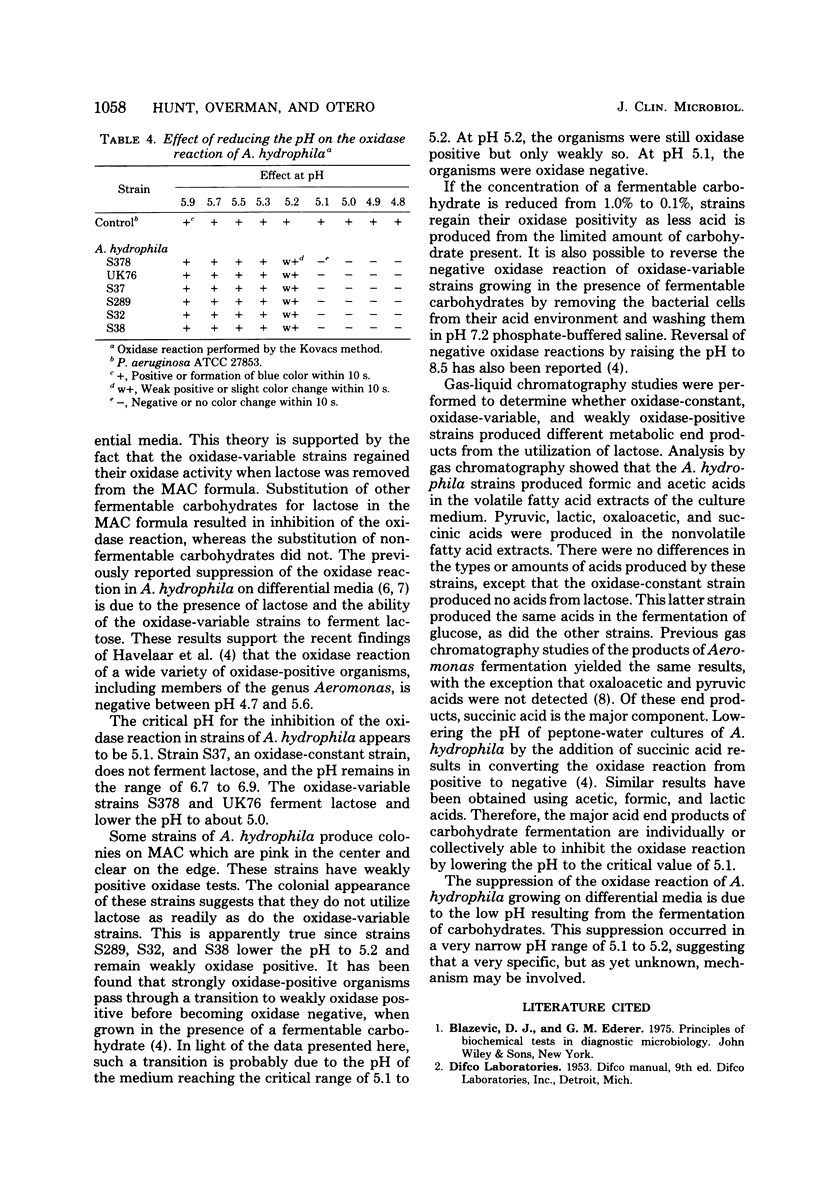
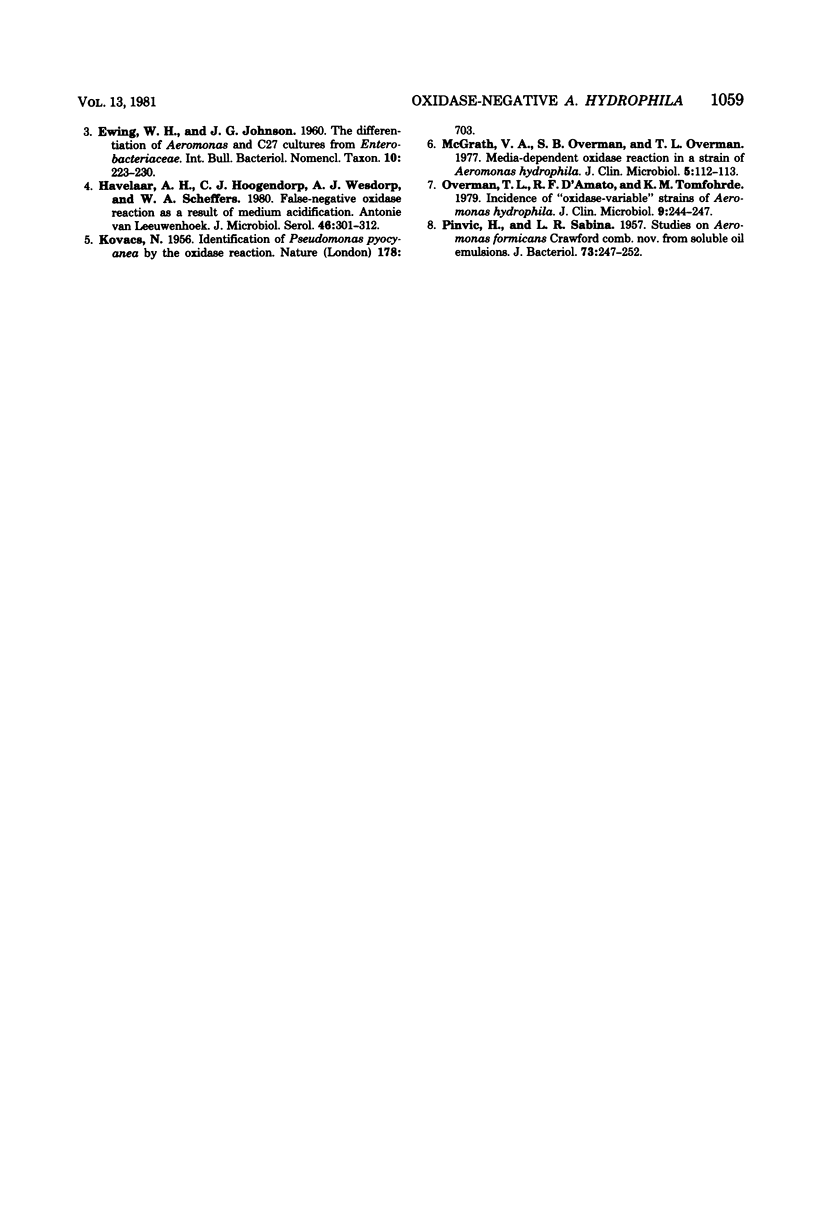
Selected References
These references are in PubMed. This may not be the complete list of references from this article.
- Havelaar A. H., Hoogendorp C. J., Wesdorp A. J., Scheffers W. A. False-negative oxidase reaction as a result of medium acidification. Antonie Van Leeuwenhoek. 1980;46(4):301–312. doi: 10.1007/BF00421977. [DOI] [PubMed] [Google Scholar]
- KOVACS N. Identification of Pseudomonas pyocyanea by the oxidase reaction. Nature. 1956 Sep 29;178(4535):703–703. doi: 10.1038/178703a0. [DOI] [PubMed] [Google Scholar]
- McGrath V. A., Overman S. B., Overman T. L. Media-dependent oxidase reaction in a strain of Aeromonas hydrophila. J Clin Microbiol. 1977 Jan;5(1):112–113. doi: 10.1128/jcm.5.1.112-113.1977. [DOI] [PMC free article] [PubMed] [Google Scholar]
- Overman T. L., D'Amato R. F., Tomfohrde K. M. Incidence of "oxidase-variable" strains of Aeromonas hydrophila. J Clin Microbiol. 1979 Feb;9(2):244–247. doi: 10.1128/jcm.9.2.244-247.1979. [DOI] [PMC free article] [PubMed] [Google Scholar]
- PIVNICK H., SABINA L. R. Studies of Aeromonas formicans Crawford comb. nov. from soluble oil emulsions. J Bacteriol. 1957 Feb;73(2):247–252. doi: 10.1128/jb.73.2.247-252.1957. [DOI] [PMC free article] [PubMed] [Google Scholar]


